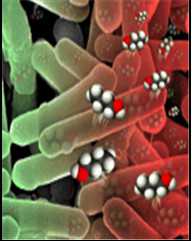PLoS One:揭示抗生素耐药细菌及耐药基因在食物链中的分布模式
2013-07-27 T.Shen 生物谷
PLoS One上的一篇研究报告“Distribution and Quantification of Antibiotic Resistant Genes and Bacteria across Agricultural and Non-Agricultural Metagenomes.”中,揭示了跨越农业和非农业领域中细菌抗生素耐药性基因的分布及定量情况。 该项研究由美国农业生态系统管理的研
PLoS One上的一篇研究报告“Distribution and Quantification of Antibiotic Resistant Genes and Bacteria across Agricultural and Non-Agricultural Metagenomes.”中,揭示了跨越农业和非农业领域中细菌抗生素耐药性基因的分布及定量情况。
该项研究由美国农业生态系统管理的研究者开展研究,研究者指出,细菌的抗生素耐药性可以通过食物链从动物转移到人类中,因此机体所携带的特异性抗生素抗性细菌和基因之间的关系就需要被阐明。在食品生产系统中抗生素耐药基因和细菌的生态关系目前并不清楚,或者说,相比其它生态系统中,食用动物中抗生素耐药性基因的情况并不清楚。
这项研究中,研究者报道了公众可获得性的农业和非农业化样品中抗生素耐药性基因的分布,并且鉴别出了哪些细菌更有可能携带这些耐药基因。相比海产以及南极样品来讲,胃肠道相关以及农业产品相关的样品中存在了比例较大的抗生素闹药性的基因。尽管抗生素耐药性基因是人类影响以及原始栖息地共有存在的天然部分,但是在特殊栖息地中这些耐药性基因的存在并不足以揭示人类起源过程中抗生素的使用情况。
研究者强调,进行基础的研究以及可控的样品是为了研究抗生素耐药细菌或者基因的天然背景水平,同时研究者们也希望深入研究来揭示每一种细菌的生物学特性是否有可能通过食物链进行转移。

doi:10.1371/journal.pone.0048325
PMC:
PMID:
Distribution and Quantification of Antibiotic Resistant Genes and Bacteria across Agricultural and Non-Agricultural Metagenomes.
Durso LM, Miller DN, Wienhold BJ.
There is concern that antibiotic resistance can potentially be transferred from animals to humans through the food chain. The relationship between specific antibiotic resistant bacteria and the genes they carry remains to be described. Few details are known about the ecology of antibiotic resistant genes and bacteria in food production systems, or how antibiotic resistance genes in food animals compare to antibiotic resistance genes in other ecosystems. Here we report the distribution of antibiotic resistant genes in publicly available agricultural and non-agricultural metagenomic samples and identify which bacteria are likely to be carrying those genes. Antibiotic resistance, as coded for in the genes used in this study, is a process that was associated with all natural, agricultural, and human-impacted ecosystems examined, with between 0.7 to 4.4% of all classified genes in each habitat coding for resistance to antibiotic and toxic compounds (RATC). Agricultural, human, and coastal-marine metagenomes have characteristic distributions of antibiotic resistance genes, and different bacteria that carry the genes. There is a larger percentage of the total genome associated with antibiotic resistance in gastrointestinal-associated and agricultural metagenomes compared to marine and Antarctic samples. Since antibiotic resistance genes are a natural part of both human-impacted and pristine habitats, presence of these resistance genes in any specific habitat is therefore not sufficient to indicate or determine impact of anthropogenic antibiotic use. We recommend that baseline studies and control samples be taken in order to determine natural background levels of antibiotic resistant bacteria and/or antibiotic resistance genes when investigating the impacts of veterinary use of antibiotics on human health. We raise questions regarding whether the underlying biology of each type of bacteria contributes to the likelihood of transfer via the food chain.
本网站所有内容来源注明为“梅斯医学”或“MedSci原创”的文字、图片和音视频资料,版权均属于梅斯医学所有。非经授权,任何媒体、网站或个人不得转载,授权转载时须注明来源为“梅斯医学”。其它来源的文章系转载文章,或“梅斯号”自媒体发布的文章,仅系出于传递更多信息之目的,本站仅负责审核内容合规,其内容不代表本站立场,本站不负责内容的准确性和版权。如果存在侵权、或不希望被转载的媒体或个人可与我们联系,我们将立即进行删除处理。
在此留言











#Plos one#
50
#耐药细菌#
73
#食物链#
65
#分布模式#
50
#食物#
47
#抗生素耐药#
50